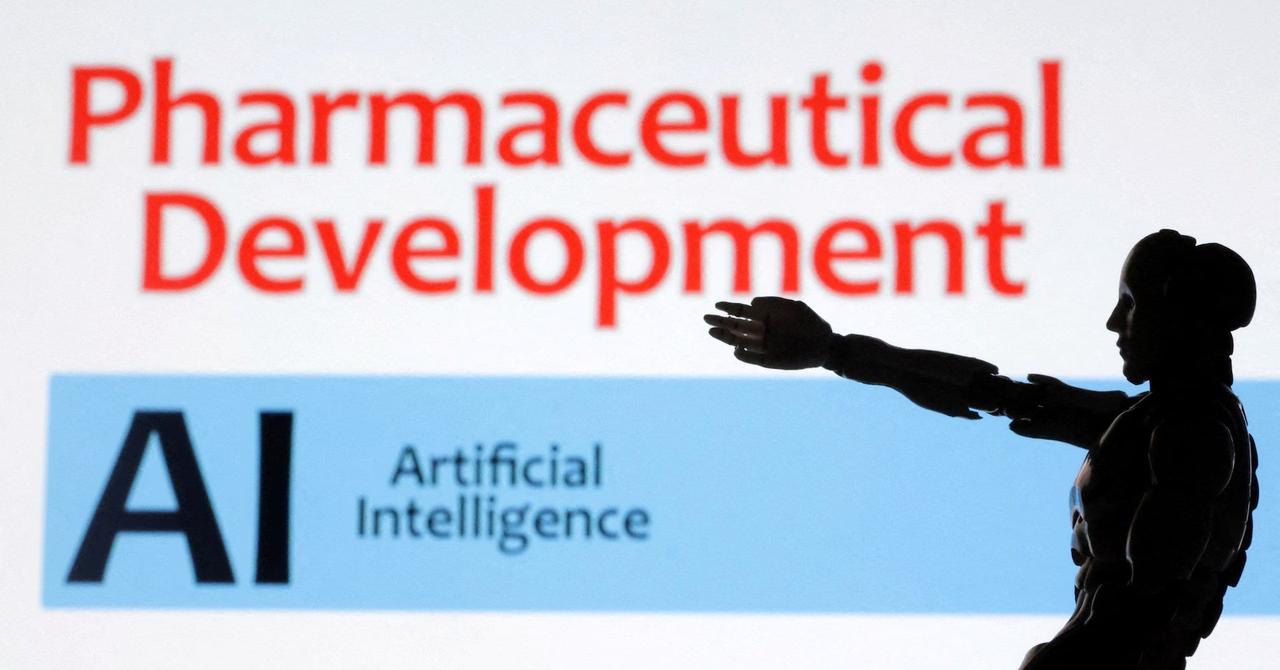AI and Computer Simulations Revolutionize Drug Delivery Testing
2 Sources
2 Sources
[1]
Cracking the code of drug delivery: using computers and AI to make medicine work smarter | Newswise
New guidelines have been developed to help scientists measure how easily medicines can travel through the body Newswise -- The successful and safe delivery of therapeutics relies on understanding how easily drugs can pass through biological barriers which protect cells. Drug permeability testing is essential in determining whether medicines can reach their intended targets in the body, but scientists have long struggled to achieve accurate and reproducible data. There are three ways to measure the success of drug delivery; in the lab, in animals and humans, and using advanced computer simulations. However, the difficult process of matching the results from these three areas of testing continues to be a problem. Bridging the gap New research - led by the University of Portsmouth in collaboration with the University of Southampton, King's College London, and the Massachusetts Institute of Technology - has developed a set of general guidelines for how to compare the values from lab experiments, molecular simulations and AI. Each method of testing has an advantage, so ultimately this is about ensuring the best quality drugs and therapeutics make it to market. Dr Christian Jorgensen, University of Portsmouth's School of Medicine, Pharmacy and Biomedical Sciences Dr Christian Jorgensen from the University of Portsmouth's School of Medicine, Pharmacy and Biomedical Sciences, said: "Drug permeability testing is very important because if a drug can't cross the right barriers, it won't work properly, no matter how good it looks on paper. "I spent some years working at a hospital in the US trying to compare permeability data measured in people and animals with computer simulated data, which was no easy feat. Each method of testing has an advantage, so ultimately this is about ensuring the best quality drugs and therapeutics make it to market. "When you seek drug approval, the more evidence you can supply on the effectiveness of it, the more likely it will be approved. That's why we're seeing more and more convergence of the three testing areas." Only 14 percent of drugs entering clinical trials between 2000 and 2015 received FDA approval in the US. Enhanced permeability testing could improve success rates by ensuring drugs effectively reach their targets while minimising side effects. Testing the most complex systems The study, published in the Journal of Chemical Information and Modeling, highlights the importance of understanding how drugs move across all biological barriers. This includes the most complex systems like the blood-brain barrier, which is a significant obstacle in delivering treatments for neurological conditions. Dr Jorgensen explained: "The strength of the paper is we've not just tested the guidelines against a simple system of barriers in the body - we used one of the most complicated, which is also highly relevant in health and therapeutics. "This work has the potential to accelerate the development of life-saving drugs, especially for conditions like brain disorders where drug delivery is notoriously difficult." The new guidelines provide a comprehensive roadmap for improving the testing and modeling of drug permeability by looking at the differences of three areas: Consistency and collaboration The toolkit emphasises critical factors such as ensuring experimental consistency, addressing data variability, and adopting FAIR (Findable, Accessible, Interoperable, Reusable) principles for data sharing. The authors also stress the importance of collaboration across fields to improve the accuracy of permeability testing and uncover new insights into drug delivery mechanisms. Professor Martin Ulmschneider from King's College London said: "By providing clear benchmarks and recommendations, we hope to unify and refine permeability testing practices, and provide a standardised set of guidelines. "This is not just about improving individual experiments, it's about creating a framework that allows the scientific community to compare their discoveries reliably." The study was funded by the European Union's Horizon 2020 research and innovation programme and supported by a fellowship from the National Institute of Neurological Disorders and Stroke (NINDS).
[2]
Research develops framework to compare lab, AI, and simulation data
University of PortsmouthJan 24 2025 The successful and safe delivery of therapeutics relies on understanding how easily drugs can pass through biological barriers which protect cells. Drug permeability testing is essential in determining whether medicines can reach their intended targets in the body, but scientists have long struggled to achieve accurate and reproducible data. There are three ways to measure the success of drug delivery; in the lab, in animals and humans, and using advanced computer simulations. However, the difficult process of matching the results from these three areas of testing continues to be a problem. Bridging the gap New research - led by the University of Portsmouth in collaboration with the University of Southampton, King's College London, and the Massachusetts Institute of Technology - has developed a set of general guidelines for how to compare the values from lab experiments, molecular simulations and AI. Drug permeability testing is very important because if a drug can't cross the right barriers, it won't work properly, no matter how good it looks on paper. I spent some years working at a hospital in the US trying to compare permeability data measured in people and animals with computer-simulated data, which was no easy feat. Each method of testing has an advantage, so ultimately this is about ensuring the best quality drugs and therapeutics make it to market. When you seek drug approval, the more evidence you can supply on the effectiveness of it, the more likely it will be approved. That's why we're seeing more and more convergence of the three testing areas." Dr. Christian Jorgensen, University of Portsmouth's School of Medicine, Pharmacy and Biomedical Sciences Only 14 percent of drugs entering clinical trials between 2000 and 2015 received FDA approval in the US. Enhanced permeability testing could improve success rates by ensuring drugs effectively reach their targets while minimizing side effects. Testing the most complex systems The study, published in the Journal of Chemical Information and Modeling, highlights the importance of understanding how drugs move across all biological barriers. This includes the most complex systems like the blood-brain barrier, which is a significant obstacle in delivering treatments for neurological conditions. Dr Jorgensen explained: "The strength of the paper is we've not just tested the guidelines against a simple system of barriers in the body - we used one of the most complicated, which is also highly relevant in health and therapeutics. "This work has the potential to accelerate the development of life-saving drugs, especially for conditions like brain disorders where drug delivery is notoriously difficult." The new guidelines provide a comprehensive roadmap for improving the testing and modeling of drug permeability by looking at the differences of three areas: On computers (In Silico): Scientists use computer programmes to predict how a drug might move through the body based on its chemical properties. In the lab (In Vitro): They test the drug on cells in dishes to see how it behaves in controlled environments. In humans/animals (In Vivo): Sometimes, they test the drug in a living body to see how it works. Consistency and collaboration The toolkit emphasizes critical factors such as ensuring experimental consistency, addressing data variability, and adopting FAIR (Findable, Accessible, Interoperable, Reusable) principles for data sharing. The authors also stress the importance of collaboration across fields to improve the accuracy of permeability testing and uncover new insights into drug delivery mechanisms. Professor Martin Ulmschneider from King's College London said: "By providing clear benchmarks and recommendations, we hope to unify and refine permeability testing practices, and provide a standardized set of guidelines. "This is not just about improving individual experiments, it's about creating a framework that allows the scientific community to compare their discoveries reliably." The study was funded by the European Union's Horizon 2020 research and innovation programme and supported by a fellowship from the National Institute of Neurological Disorders and Stroke (NINDS). University of Portsmouth Journal reference: Jorgensen, C., et al. (2025). Permeability Benchmarking: Guidelines for Comparing in Silico, in Vitro, and in Vivo Measurements. Journal of Chemical Information and Modeling. doi.org/10.1021/acs.jcim.4c01815.
Share
Share
Copy Link
Researchers develop new guidelines to integrate AI, lab experiments, and computer simulations for more accurate drug permeability testing, potentially accelerating life-saving drug development.

Revolutionizing Drug Delivery Testing with AI and Computer Simulations
In a groundbreaking development, researchers have established new guidelines to enhance drug permeability testing by integrating artificial intelligence, laboratory experiments, and computer simulations. This innovative approach aims to address longstanding challenges in drug development and potentially accelerate the creation of life-saving medications
1
2
.The Importance of Drug Permeability Testing
Drug permeability testing is crucial in determining whether medicines can effectively reach their intended targets within the body. However, scientists have struggled to achieve accurate and reproducible data in this field. The process involves three primary methods of measurement:
- Laboratory experiments (in vitro)
- Animal and human trials (in vivo)
- Advanced computer simulations (in silico)
Historically, reconciling the results from these diverse testing areas has been problematic, hindering the drug development process
1
.A Collaborative Effort to Bridge the Gap
A research team led by the University of Portsmouth, in collaboration with the University of Southampton, King's College London, and the Massachusetts Institute of Technology, has developed a set of general guidelines to compare values from lab experiments, molecular simulations, and AI
1
2
.Dr. Christian Jorgensen from the University of Portsmouth's School of Medicine, Pharmacy and Biomedical Sciences emphasized the significance of this work, stating, "Each method of testing has an advantage, so ultimately this is about ensuring the best quality drugs and therapeutics make it to market"
1
.Comprehensive Guidelines for Improved Testing
The new guidelines, published in the Journal of Chemical Information and Modeling, provide a comprehensive roadmap for enhancing drug permeability testing. Key aspects of the framework include:
- Ensuring experimental consistency
- Addressing data variability
- Adopting FAIR (Findable, Accessible, Interoperable, Reusable) principles for data sharing
- Promoting collaboration across different scientific fields
1
2
Tackling Complex Biological Barriers
The research team tested their guidelines against one of the most complex biological systems: the blood-brain barrier. This barrier poses a significant obstacle in delivering treatments for neurological conditions. Dr. Jorgensen noted, "This work has the potential to accelerate the development of life-saving drugs, especially for conditions like brain disorders where drug delivery is notoriously difficult"
1
.Related Stories
Potential Impact on Drug Development
The integration of AI, lab experiments, and computer simulations could significantly improve the success rates of drug development. Currently, only 14 percent of drugs entering clinical trials between 2000 and 2015 received FDA approval in the US. Enhanced permeability testing could ensure drugs effectively reach their targets while minimizing side effects
1
2
.A Call for Standardization and Collaboration
Professor Martin Ulmschneider from King's College London emphasized the broader implications of this research: "This is not just about improving individual experiments, it's about creating a framework that allows the scientific community to compare their discoveries reliably"
1
.The new guidelines aim to unify and refine permeability testing practices, providing a standardized set of benchmarks and recommendations for the scientific community. This approach could foster more effective collaboration and accelerate breakthroughs in drug delivery mechanisms
1
2
.As the pharmaceutical industry continues to evolve, the integration of AI and computer simulations with traditional laboratory methods promises to revolutionize drug development, potentially bringing life-saving treatments to patients more quickly and efficiently.
References
Summarized by
Navi
[1]
Related Stories
Recent Highlights
1
Google launches Gemini 3 Flash as default AI model, delivering speed with Pro-grade reasoning
Technology

2
OpenAI launches GPT Image 1.5 as AI image generator war with Google intensifies
Technology

3
OpenAI launches ChatGPT app store, opening doors for third-party developers to build AI-powered apps
Technology








